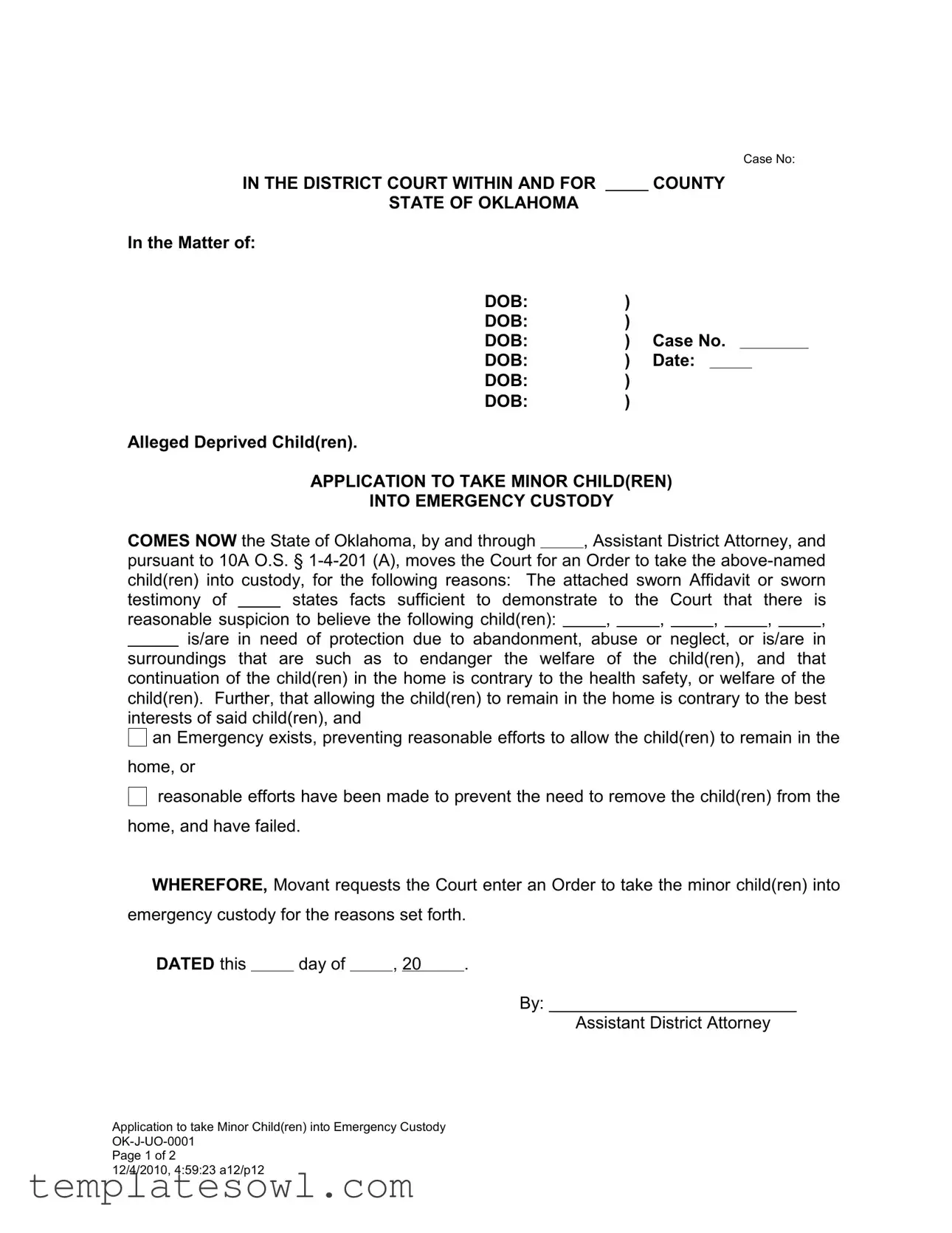Case No:
IN THE DISTRICT COURT WITHIN AND FOR COUNTY
STATE OF OKLAHOMA
In the Matter of:
|
DOB: |
) |
|
|
|
|
|
DOB: |
) |
|
|
|
|
|
DOB: |
) |
Case No. |
|
|
|
|
|
|
|
|
DOB: |
) |
Date: |
|
DOB: |
) |
|
|
|
|
|
DOB: |
) |
|
|
|
|
Alleged Deprived Child(ren). |
|
|
|
|
|
|
APPLICATION TO TAKE MINOR CHILD(REN)
INTO EMERGENCY CUSTODY
COMES NOW the State of Oklahoma, by and through , Assistant District Attorney, and pursuant to 10A O.S. § 1-4-201 (A), moves the Court for an Order to take the above-named child(ren) into custody, for the following reasons: The attached sworn Affidavit or sworn testimony of states facts sufficient to demonstrate to the Court that there is reasonable suspicion to believe the following child(ren): , , , , ,
is/are in need of protection due to abandonment, abuse or neglect, or is/are in surroundings that are such as to endanger the welfare of the child(ren), and that continuation of the child(ren) in the home is contrary to the health safety, or welfare of the child(ren). Further, that allowing the child(ren) to remain in the home is contrary to the best interests of said child(ren), and
an Emergency exists, preventing reasonable efforts to allow the child(ren) to remain in the
home, or
reasonable efforts have been made to prevent the need to remove the child(ren) from the
home, and have failed.
WHEREFORE, Movant requests the Court enter an Order to take the minor child(ren) into
emergency custody for the reasons set forth.
By: __________________________
Assistant District Attorney
Application to take Minor Child(ren) into Emergency Custody OK-J-UO-0001
Page 1 of 2
12/4/2010, 4:59:23 a12/p12
Application to take Minor Child(ren) into Emergency Custody
OK-J-UO-0001
Page 2 of 2
12/4/2010, 4:59:23 a12/p12

